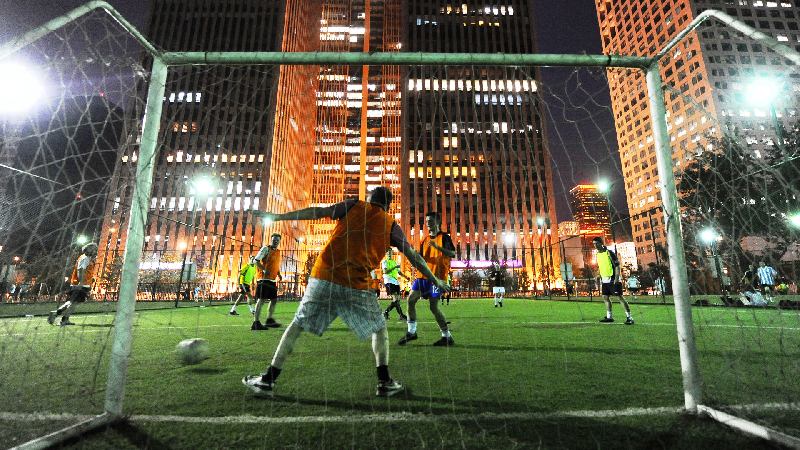If there is one type of sports netting that is recognisable around the globe, and which has appeared in more iconic sporting imagery than any other, it is the net on a soccer goal. Given that soccer is the most-watched sport in the world there cannot be many who have not seen at least one photograph or TV image of a soccer net.
Although the purpose of the game, which is to score a goal, is often described as ‘hitting the back of the net’, when fans and players are discussing soccer equipment, it is the one item that probably gets overlooked. Soccer shirts, training gear, soccer boots, and even the ball are all likely to have many more hours of discussion, consideration, and arguments, than the net.
In fact, unlike some sports, you can actually play soccer without nets. Whilst games of tennis and badminton would be unrecognisable without a net, soccer can be played, not only without a net, but without real goalposts as well. Using jumpers, cones or even a couple of old tyres as goals will be recalled by many who have played soccer in the park with friends.
However, when it comes to competitive soccer, nets are used and at many levels, they are compulsory. This has been the case for many years, but it was not always so. The history of sporting nets is long, and the history of soccer nets actually tells us that in the early days, they did not even exist.
The earliest soccer matches certainly did not use sports nets, and in fact, the crossbar which we all recognise today as an integral part of the goal frame, did not even appear until after several years of fabric tape being strung between the post to indicate the height of the goal. But, even with a solid crossbar, arguments still arose as to whether a goal had been scored or not.
The concept of using nets came about in the 1890s from an engineer in Liverpool, England, called John Brodie. The large pockets in a pair of trousers he wore gave him the idea that ‘pockets’ that captured the ball would show that a legitimate goal was scored. Instead of pockets, nets were used, which were soon added to the official rules of the game, and where they have remained ever since.
The net bulging and capturing the ball has become an integral part of soccer, but it is a sports netting that is not infallible. There have been occasions where the ball has hit the net with such force, that it has bounced back out again, and the referee has waved play on. Thankfully, the introduction of goal-line technology should ensure no ‘real’ goals are missed in professional tournaments and leagues, any longer.
Another development that has been happening over the past few years in the major leagues has been the shape of soccer nets moving from their traditional shape of the net sloping diagonally from the back of the goal to box-shaped nets. Whilst the traditional is still the most used type in local parks, schools, and recreation grounds, in major leagues and tournaments such as the World Cup, the box-shaped is preferred.
The box nets do not require the ‘D’-shaped supports but instead are supported from the rear by two poles which are located well behind the goal frame, sometimes, ironically with a length of fabric tape giving us a poignant reminder of how far soccer equipment, including goal nets, has evolved.

